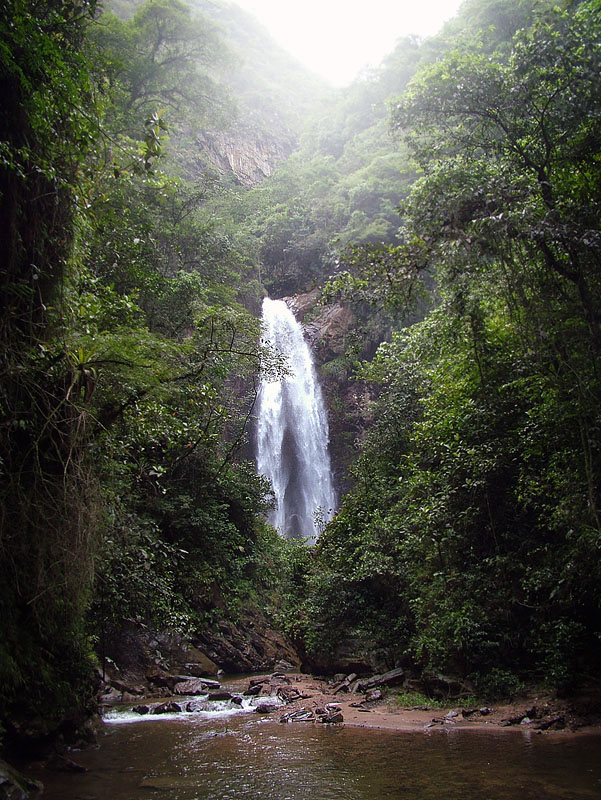  
| Hyperchiria species?
Caranavi, Yungas, Bolivia d.
19 february 2007. Photographer; Lars
Andersen |
Adeloneivaia
acuta (Schaus, 1896). Caranavi,
Yungas, Bolivia d.
20 february 2007. Photographer; Lars
Andersen |
Syssphinx
amena (Travassos 1941).
Caranavi, Yungas, Bolivia d.
19 february 2007. Photographer; Lars
Andersen |

Adeloneivaia
jason (Boisduval 1872) Family: Saturniidae,
Subfamily: Ceratocampinae.
Caranavi, Yungas, Bolivia d. 26
january 2020. Photographer; Nikolaj
Kleissl
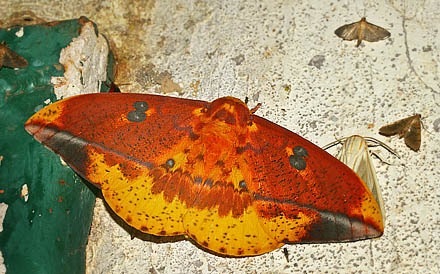 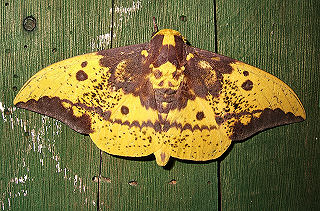 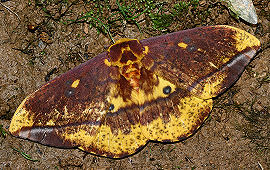
| Eacles
ormondei peruviana (Bouvier, 1927).
Caranavi, Yungas, Bolivia d.
19 february 2007. Photographer; Lars
Andersen |
Imperial
Moth, Eacles
imperialis anchicayensis (Lemaire 1971).
Caranavi, Yungas, Bolivia d.
19 february 2006. Photographer; Peter
Møllmann |
Eacles
ormondei peruviana (Bouvier, 1927).
Caranavi, Yungas, Bolivia d.
2 february 2006. Photographer; Lars
Andersen |
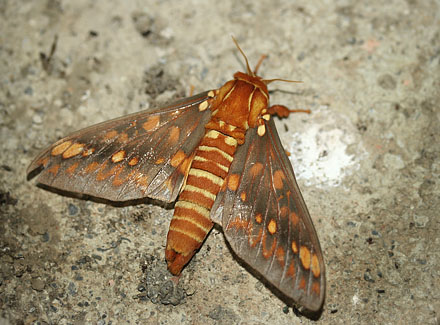 
| Andean
Regal Moth, Citheronia
andina (Lemaire 1971). Caranavi,
Yungas, Bolivia d.
19 february 2007. Photographer; Lars
Andersen |
Imperial
Moth, Eacles
imperialis magnifica (Walker 1855).
Coroico, Yungas, Bolivia d.
14 february 2012. Photographer; Lars
Andersen |

Loxolomia johnsoni (Schaus 1932). Caranavi,
Yungas, Bolivia d. 20 february 2006. Photographer; Peter
Møllmann
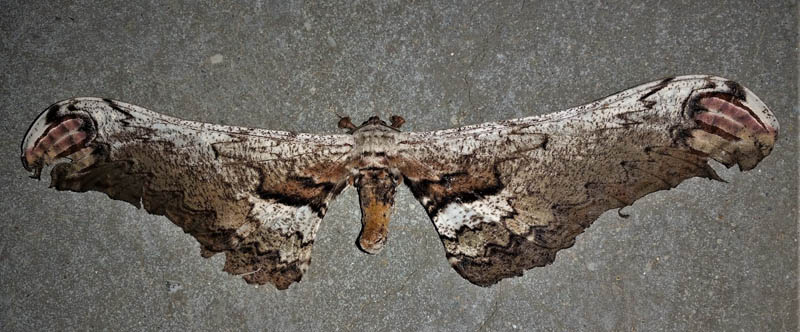
Loxolomia
johnsoni (Schaus, 1932).
Subfamily: Arsenurinae.
Caranavi, Yungas, Bolivia d. 20
december 2019. Photographer; Peter
Møllmann
 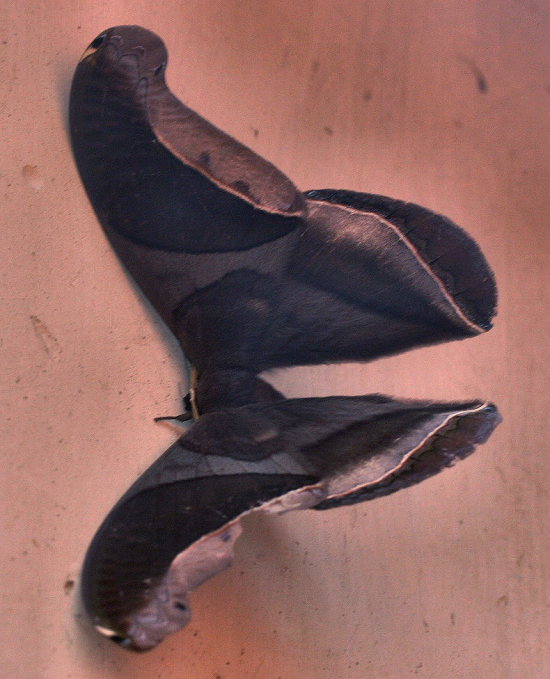
| Rothschildia
chiris (Rothschild 1907).
Caranavi, Yungas, Bolivia january
2007.
Photographer; Lars
Andersen |
Rhescynthis
hippodamia (Cramer 1777). Challa,
Yungas, Bolivia d.
27 januar 2006. Photographer; Lars
Andersen |
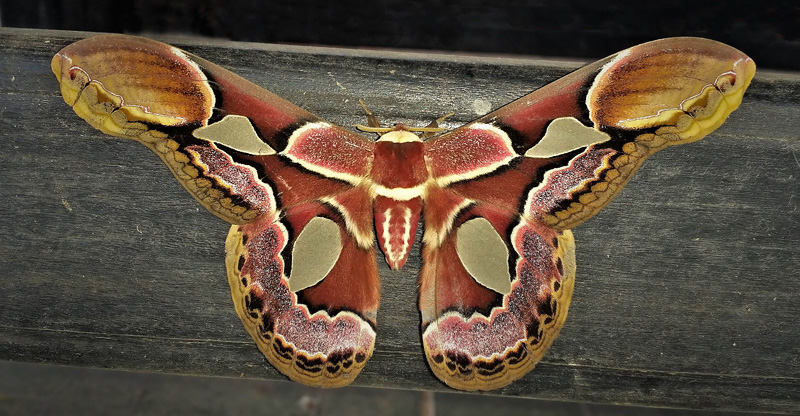
Rothschild's Silk Moth, Rothschildia
erycina (Shaw, 1797). Caranavi, Bolivia January
19, 2018. Photographer; Peter
Møllmann
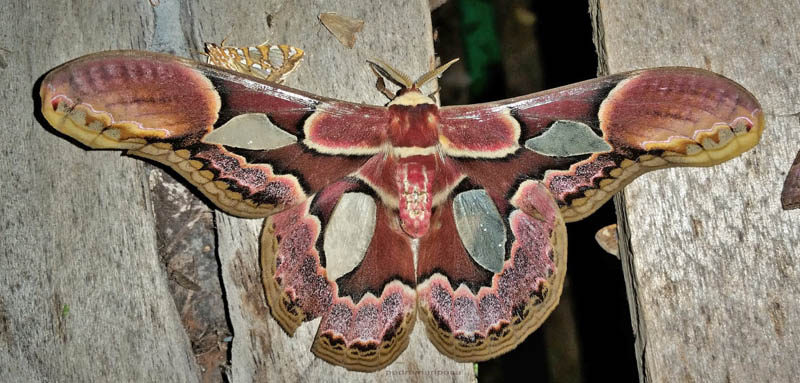
Rothschild's Silk Moth, Rothschildia
erycina (Shaw, 1797). Caranavi, Yungas,
Bolivia december
6, 2021. Photographer; Peter
Møllmann
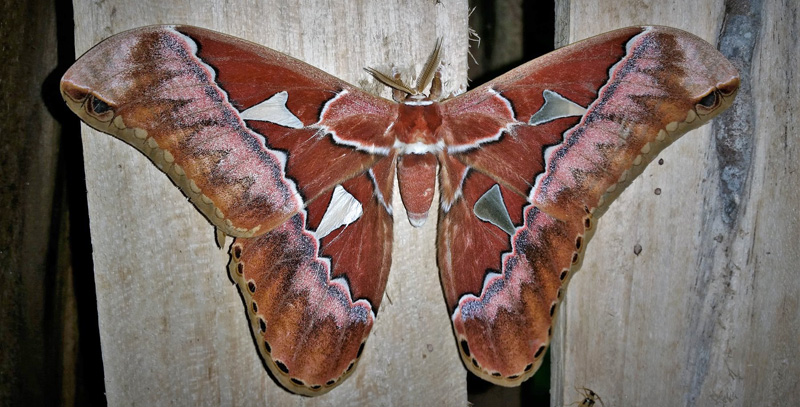
Orizaba Silkmoth, Rothschildia
orizaba (Westwood 1854). Caranavi, Yungas,
Bolivia january 24, 2019.
Photographer; Peter Møllmann
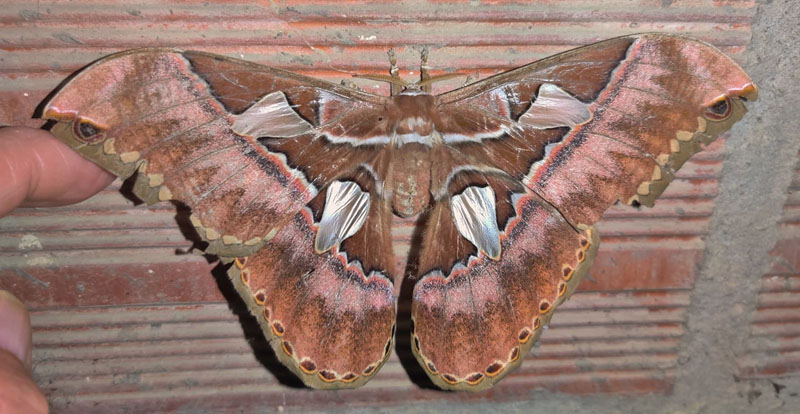
Rothschildia
aurota (Cramer 1775). Subfamily: Saturniinaea.
Caranavi, Yungas, Bolivia d. 22
december 2019. Photographer; Peter
Møllmann
ID by Andrés
Miguel Orellana
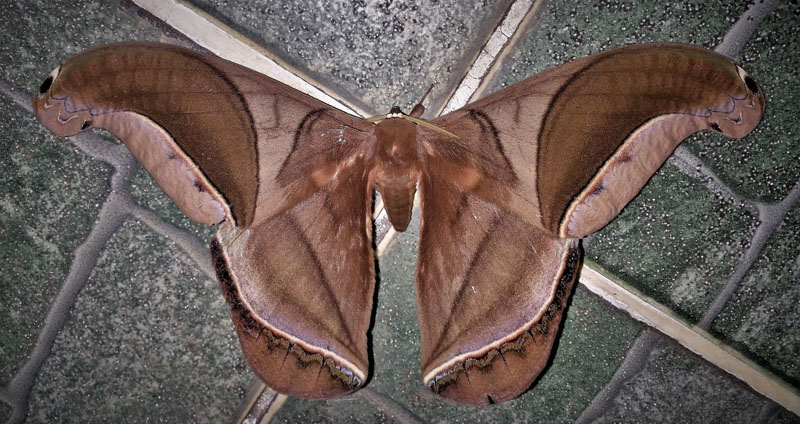
Rhescynthis hippodamia (Cramer
1777). Caranavi, Yungas, Bolivia february
8, 2019. Photographer; Peter
Møllmann
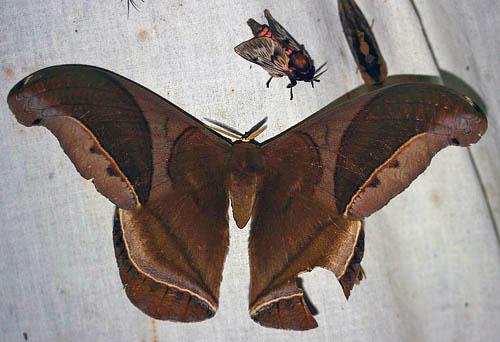 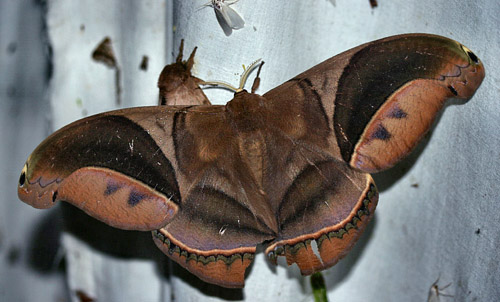 
| Rhescynthis
hippodamia (Cramer 1777). Caranavi,
Yungas, Bolivia january
2007.
Photographer; Lars
Andersen |
Rhescynthis
hippodamia (Cramer 1777). Caranavi,
Yungas, Bolivia january
2007.
Photographer; Lars
Andersen |
Rhescynthis
hippodamia (Cramer 1777). Caranavi,
Yungas, Bolivia january
2007.
Photographer; Lars
Andersen |
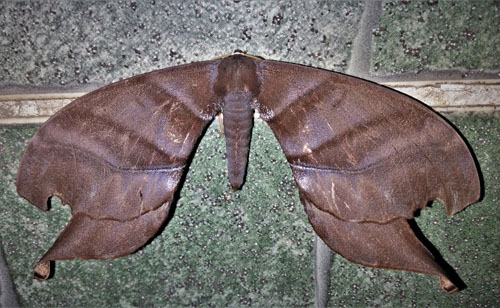 
Maybe
a Paradaemonia
platydesmia
(Rothschild 1907)?.
Caranavi, Yungas, Bolivia december
3, 2018.
Photographer; Peter
Møllmann
|
Titaea
lemoulti (Schaus, 1905)..
Caranavi, Yungas, Bolivia december
11, 2018.
Photographer; Peter
Møllmann
|
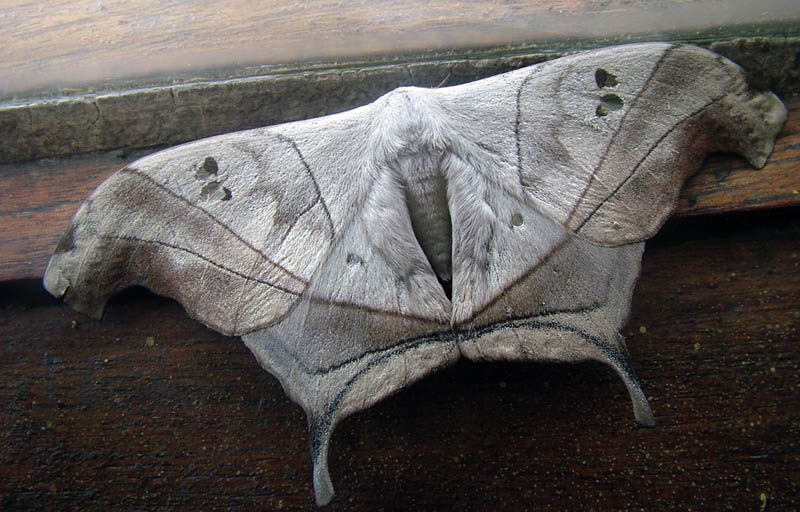
Dysdaemonia boreas (Cramer, 1775). Hotel
Esmeralda. Coroico, Yungas, Bolivia d. 23
january 2005.
Photographer; Lars Andersen
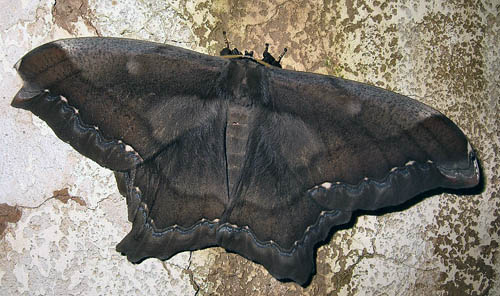 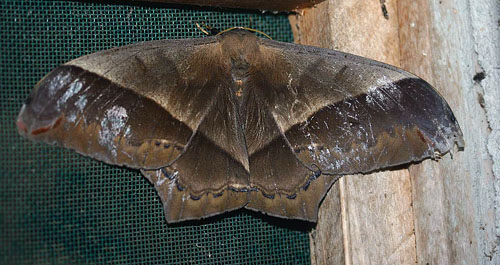
| Arsenura
batesii (Felder & Rogenhofer,
1874). Caranavi, Yungas, Bolivia d.
8 february 2006. Fotograf; Peter
Møllmann |
Arsenura
rebeli (Gschwandner, 1920).
Caranavi, Yungas, Bolivia january
2007.
Photographer; Lars
Andersen |
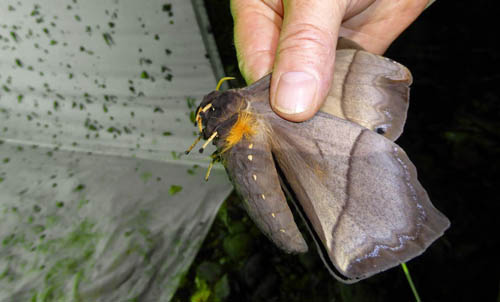 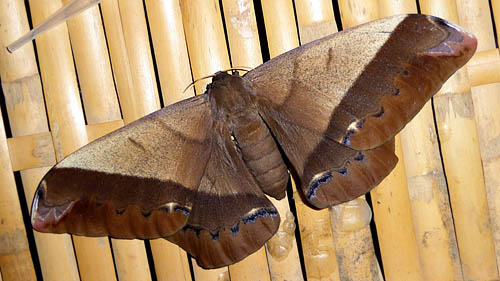
Arsenura armida (Cramer, 1779). Caranavi,
Yungas, Bolivia december 2014. Photographer; Jan
Flindt Christensen
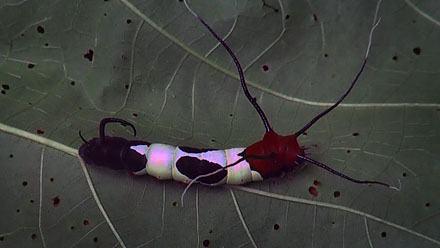 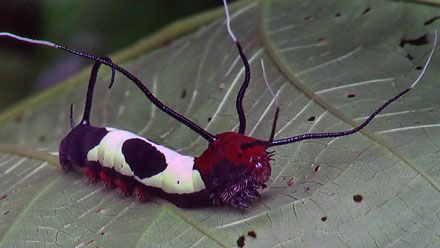
Arsenura species? Caranavi, Yungas,
Bolivia december 2014. Photographer; Peter
Møllmann
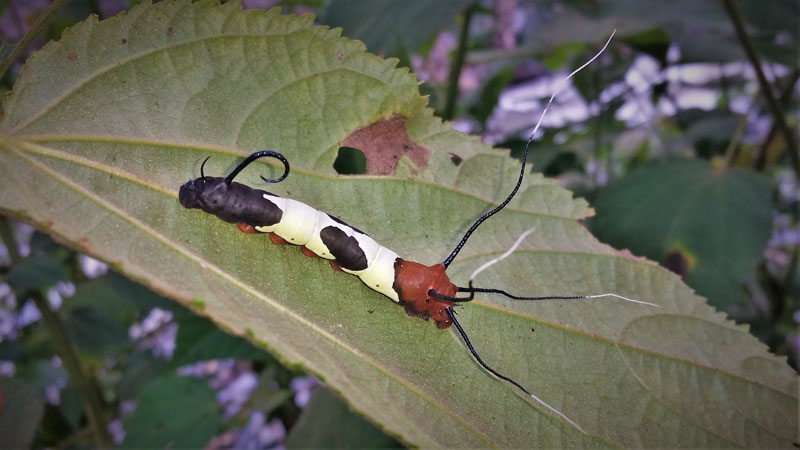
Arsenura species
larvae. Pusiliani, Caranavi, Yungas, Bolivia d. 29
december 2019. Photographer; Peter
Møllmann
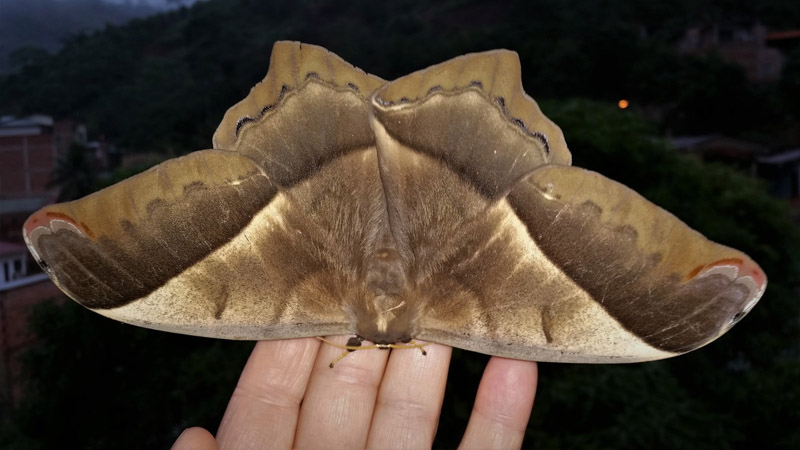
Arsenura rebeli (Gschwandner,
1920). Caranavi, Yungas, Bolivia december
18, 2018. Photographer; Peter
Møllmann
| Arsenura
genus is found in the tropics of the New
World. There are 35 known
species in this genus. Males have
a semblance of a tail and the female has
an almost rounded rear wing.
The females typically are larger. SATURNIIDAE
World Homepage für den Saturniidenfreund
|
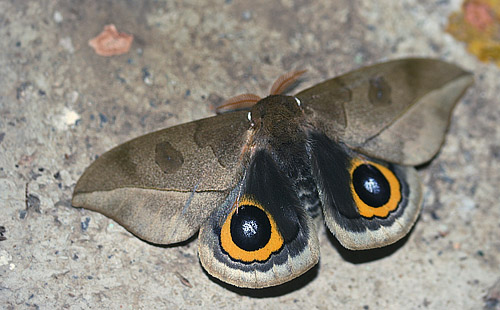 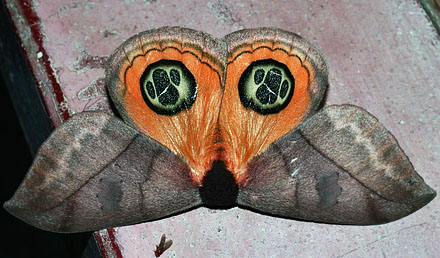 
| Automeris
latenigra (Lemaire 1967). Caranavi,
Yungas, Bolivia d.
19 february 2007. Photographer; Lars
Andersen |
Automeris
liberia (Cramer 1780). Coroico,
Yungas, Bolivia d.
19 january 2006. Photographer; Lars
Andersen |
Pseudautomeris
luteata (Walker 1865). Coroico,
Yungas, Bolivia d.
17 january 2005. Photographer; Lars
Andersen |
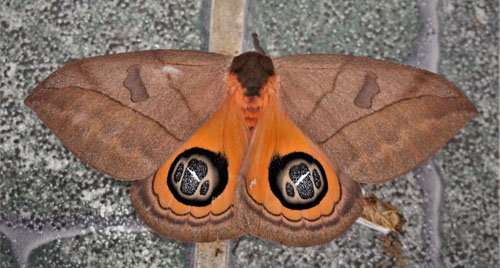 
Bullseye
Moth, Automeris
liberia (Cramer, 1780).
Caranavi, Yungas, Bolivia december
3, 2018.
Photographer; Peter
Møllmann |
Dirphia
subhorca (Dognin, 1901).
Caranavi, Yungas, Bolivia december
11, 2018.
Photographer; Peter
Møllmann |
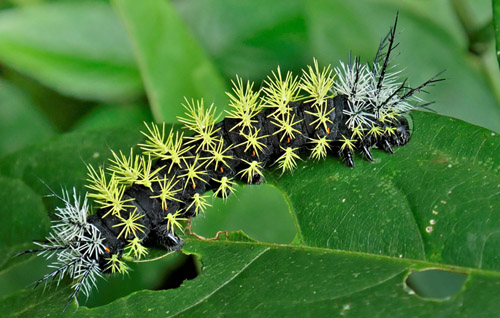
Maybe a
Leucanella lynx (Bouvier 1930) larvae.
Caranavi, Yungas, Bolivia d. 17
february 2020. Photographer; Peter
Møllmann

Dirphiopsis flora (Shaus, 1911). Caranavi,
Yungas, Bolivia d. 19 february 2007. Photographer; Lars
Andersen
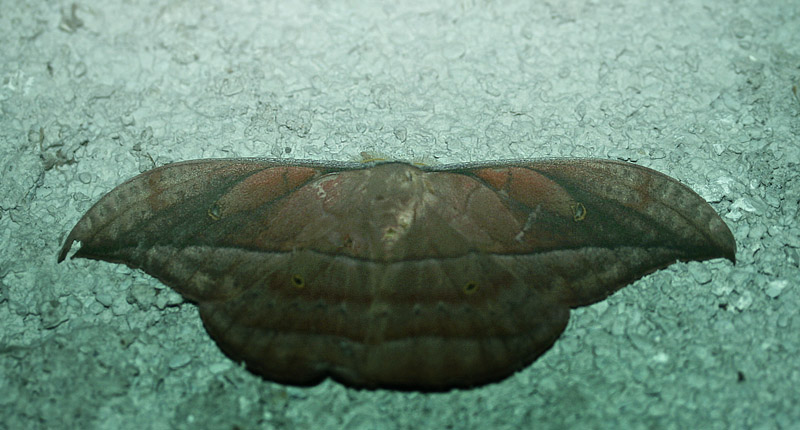
Copaxa curvilinea (Shaus, 1912). Caranavi,
Yungas, Bolivia d. 19 february 2007. Photographer; Lars
Andersen

Copaxa arianae (Brechlin, Käch &
Meister, 2013). Caranavi, Yungas, Bolivia d. 5
february 2007.
Photographer; Peter Møllmann
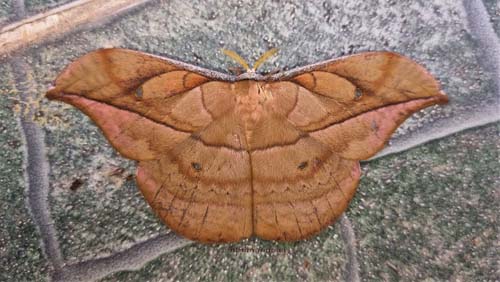
Copaxa decrescens (Walker
1855). Caranavi, Yungas, Bolivia december
1, 2021. Photographer; Peter
Møllmann
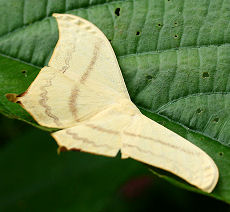 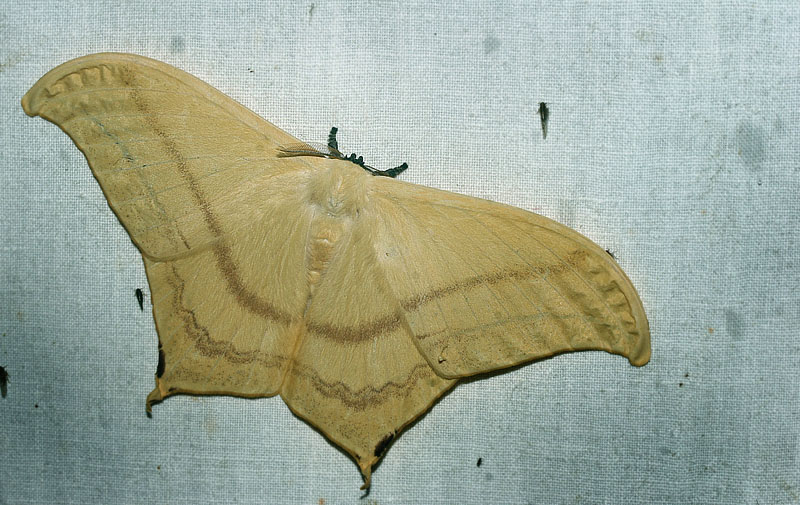
Asthenia (Therinia)
buckleyi
(Druce, 1890) Subfamily Oxyteninae. Caranavi, Yungas,
Bolivia d. 30 january 2006 & 18
february 2007.
Photographer; Lars Andersen
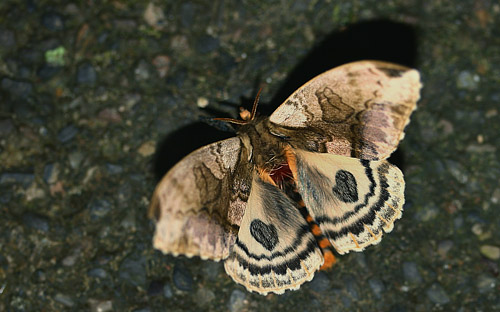
Molippa sabina (Walker, 1855). Caranavi,
Yungas, Bolivia d. 19 february 2007. Photographer; Lars
Andersen
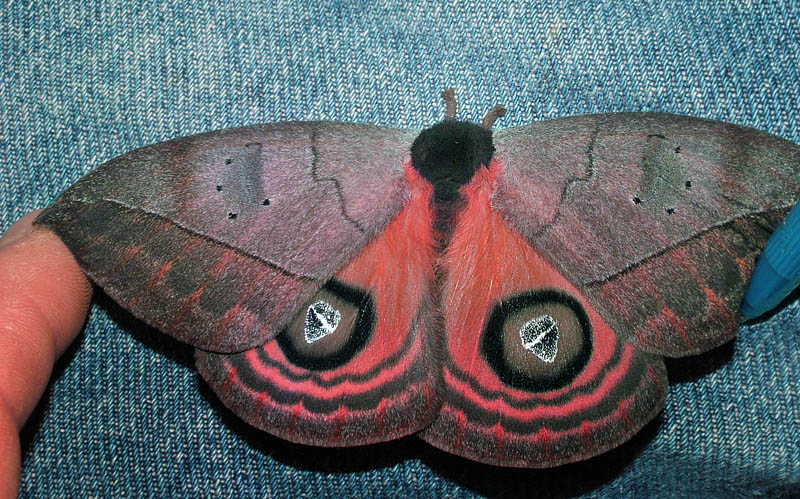
Automeris amanda (Schaus, 1900). Hotel
Esmeralda. Coroico, Yungas, Bolivia d. 19
january 2005.
Photographer; Lars Andersen
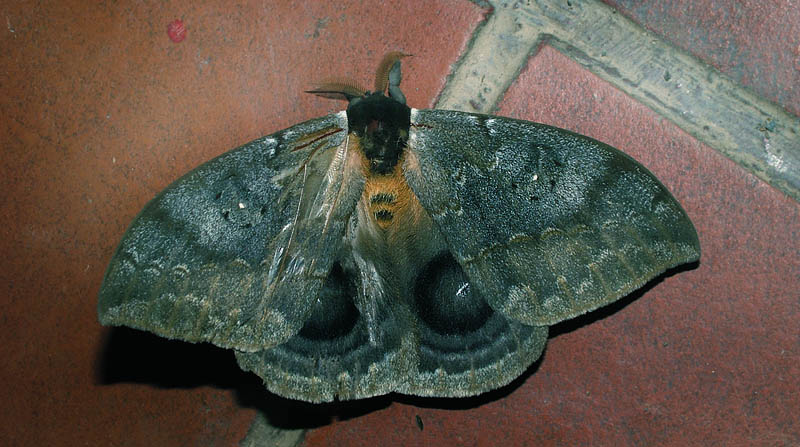
Hotel
Esmeralda. Coroico, Yungas, Bolivia d. 13
january 2005.
Photographer; Lars Andersen
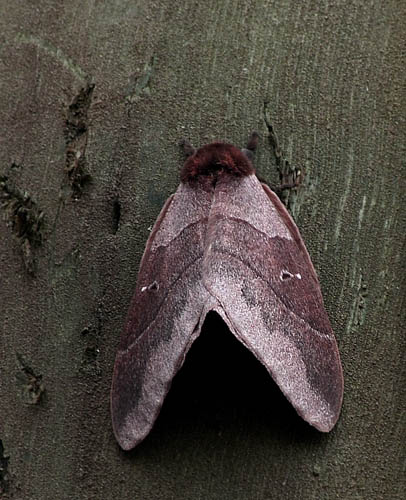 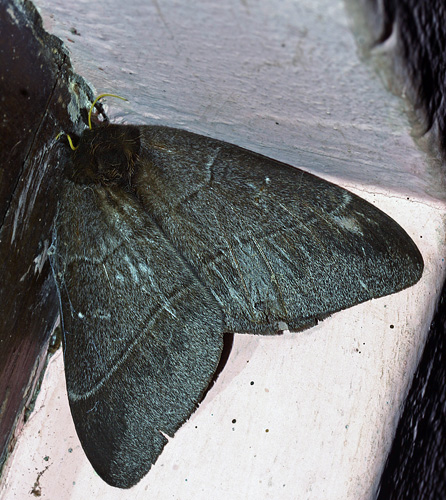
Coroico,
Yungas, Bolivia d. 2 january 2005 & 18
january 2006.
Photographer; Lars Andersen
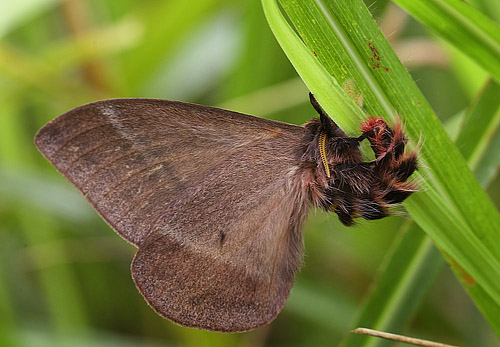
Periphoba species. Coroico, Yungas,
Bolivia d. 14 january 2012. Photographer; Lars
Andersen
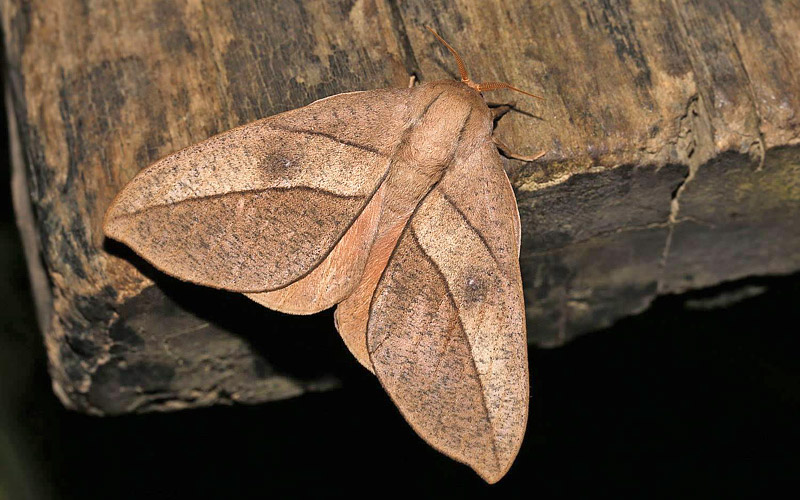
Adeloneivaia acuta (Schaus, 1896). Caranavi.
Yungas, Bolivia 16th January 2014. Photographer: Ole
Andersen
____________________________________________
The World’s Deadliest
Caterpillar
 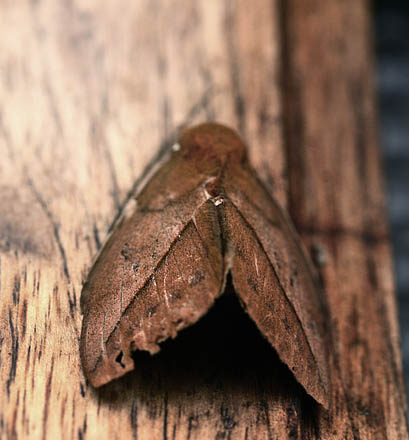 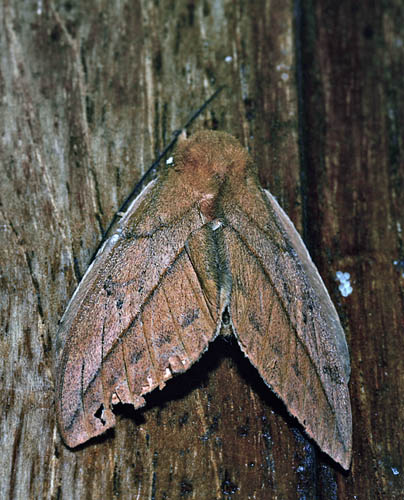
| Killermoth,
Lonomia achelous (Cramer 1777).
female. Hotel Esmeralda Elevation: 1800 m.
Coroico, Yungas, Bolivia d.
9 january 2005. Photographer; Lars
Andersen |
Killermoth,
Lonomia camox (Lemaire, 1972) female.
Hotel Esmeralda Elevation: 1800 m.
Coroico, Yungas, Bolivia d.
24 january 2007. Photographer; Lars
Andersen |
| |
|
| Killermoth, Lonomia
obliqua is just as frail as
any other caterpillars you might have
seen, but that doesn’t stop it from
causing severe serious internal
hemorrhaging and even death, if you just
touch it. This terrible Lonomia
caterpillars live in the cloudforests of
Yungas, Bolivia to tropical forest in
Amazonas lowland to Southern Brazil in
South America. And cause a few deaths
every year, especially in southern Brazil,
where they’re usually found on the
bark of trees. Blending perfectly in
their surrounding, Lonomia
obliqua caterpillars often can’t
be avoided, even if people watch out for
them. Most incidents occur when travelers
lean against a tree and unknowingly brush
against one of more caterpillars, which
release a very powerful anticoagulant
venom.
Symptoms
of Lonomia obliqua poisoning
include severe internal bleeding, renal
failure and hemolysis. If the skin comes
into contact with several caterpillars,
death is often the outcome. The lethal
dose of the toxin secreted by this
terrible creature is among the lowest of
all known toxins.
But
there is also a bright side to the Lonomia
obliqua caterpillar. Its powerful
anticoagulant could be used in the
prevention of life-threatening blood-clots,
but research is still being conducted in
the hope of somehow isolating some
pharmaceutically valuable chemicals. But
until that happens, all you can do is
refrain yourself from leaning on trees,
the next time you’re in South
America.
|
____________________________________________
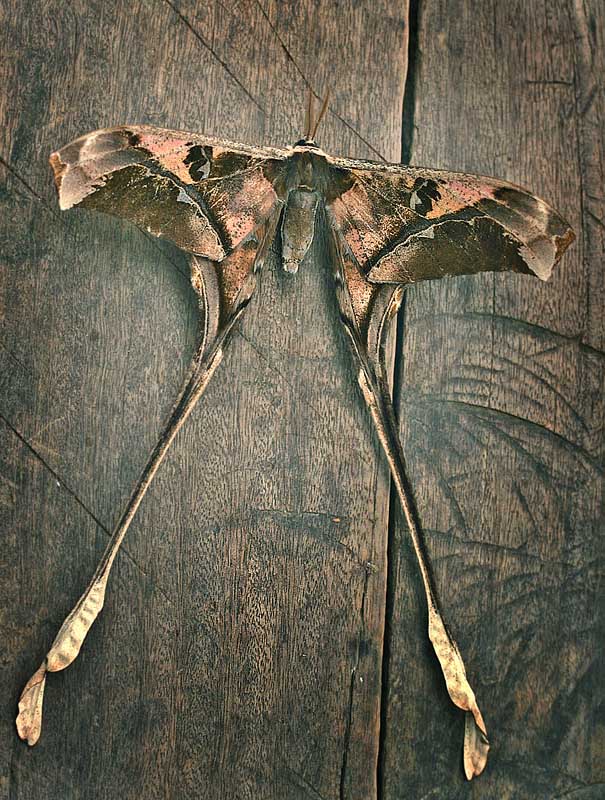
Andean Longtail Silk Moth, Copiopteryx
semiramis andensis (Lemaire 1974). Caranavi, Yungas,
Bolivia d. 3 february 2007. Photographer; Lars
Andersen
| Copiopteryx
genus is found in the tropics of the New
World. There are 5 known
species in this genus per the 1996
Heppner checklist. The
females typically have wider and shorter
tails. SATURNIIDAE
World Homepage für den Saturniidenfreund
|
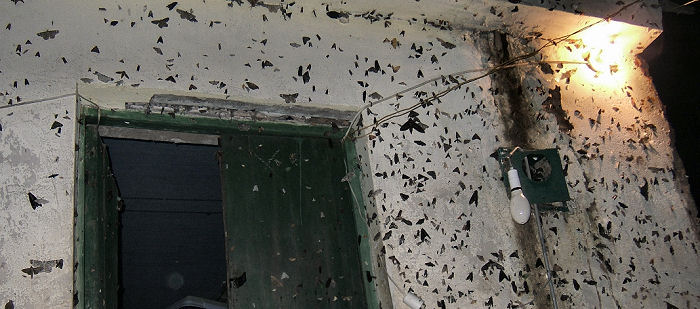
____________________________________________
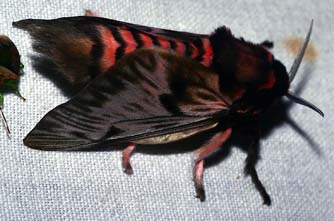 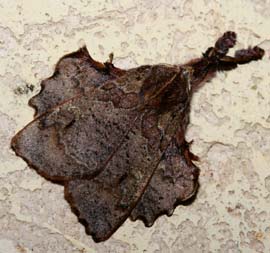 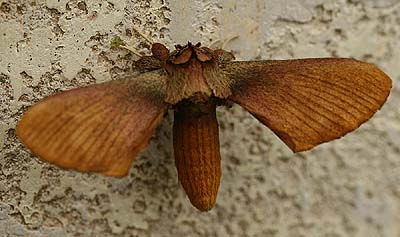
____________________________________________
by
Lars Andersen
_________________________________
Back
to Mariposas de Bolivia febrero
2010
|

